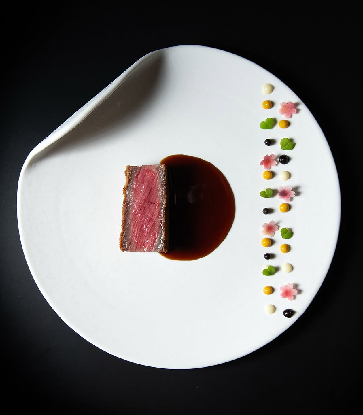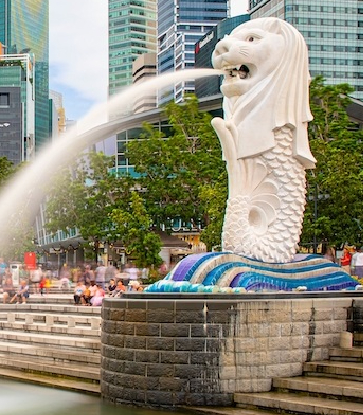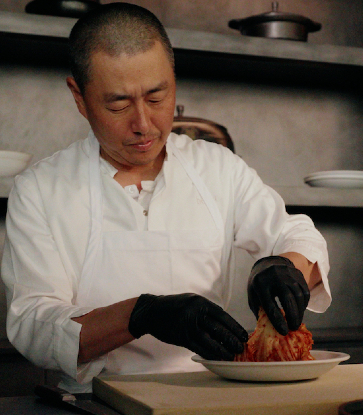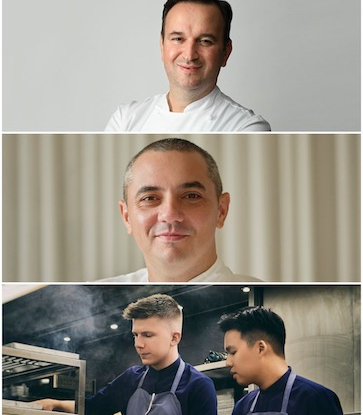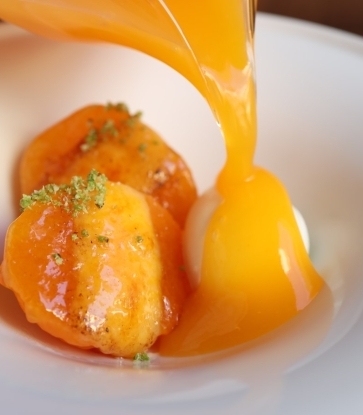A very important piece of advice to give anyone coming to Singapore to indulge in a gustatory adventure is: always save room for dessert!
As enticing as Singapore's culinary offerings may be — from the different types of seafood and noodle dishes, to the huge variety of enticing hawker food — Singapore offers some of the best and unmissable dessert options for the sweet-lover.
The nation’s hawkers seem to possess this set of innate skills to elevate the humblest ingredients and turn them into some truly unforgettable sweet treats. Here are some must-try desserts when one is in Singapore:

Kueh Tutu
One of the most irresistible sweet snacks around, kueh tutu consists of fat, floret-shaped discs of steamed rice flour, filled with either crushed peanuts or a blend of palm sugar and grated coconut, served daintily on a square piece of pandan leaf, which lends its fragrance to the whole concoction.
The invention of the present form of the kueh tutu dates back to the 1930s and is attributed to Tan Eng Huat, a Chinese kueh maker in Bukit Pasoh, who took his inspiration from the Malay putu piring, which are similar in composition but larger-sized. Putu piring itself is derived from the South Indian puttu, steamed cylinders of rice flour cakes, layered with grated coconut.
Where to find Kueh Tutu in Singapore: Du Du Shou Shi (Bib Gourmand, MICHELIN Guide Singapore 2024)

Soya Beancurd
The making and consumption of soya beancurd China dates back over 2,000 years. The invention of this food item was attributed to a royal personage — Prince Liu An (179 BC-122 BC), the grandson of Han Dynasty founder, Emperor Liu Bang.
Douhua (Chinese: 豆花) is a very soft version of soya beancurd, consumed in savoury form in Northern China, but as a sweet dessert in Southern China. In Southeast Asia, it’s usually served sweet, due to the influence of the mainly Southern Chinese immigrants: “taho” in the Philippines, “kembang tahu” in Indonesia, “tauhuai” in Thailand, “tau fu fah” in Cantonese-speaking parts of Malaysia, “tàu hủ hoa” in Vietnam, and “tau huay” in Singapore.
One of the leading purveyors of soya beancurd in Singapore is Whampoa Soya Bean & Grass Jelly Drinks, which serves up the smoothest, most delicate curds, sweetened with light sugar syrup. One can also opt to add stewed lotus seeds, ginkgo nuts and/or red beans.
Where to Find Soya Beancurd in Singapore: Whampoa Soya Bean & Grass Jelly Drinks (Selected, MICHELIN Guide Singapore 2024)

Bubur Terigu
Bubur terigu is a sweet wheat porridge of Malay and Nyonya origins. “Bubur” is Malay for “porridge”, whilst “terigu” is a Portuguese loanword (where it’s called trigo) used in Malay to refer to wheat.
The moreish dessert is prepared by boiling pre-soaked white wheat grains in coconut milk, pandan leaves, and gula melaka (palm sugar). There is also a similar dessert using black glutinous rice in place of wheat called “Bubut Pulut Hitam”. In many places, these two versions are offered alongside each other.
Served warm or at room temperature, the flavour and texture of this traditional dessert is quite addictive.
Where to Find Bubur Terigu in Singapore: Hjh Maimunah (Jalan Pisang) (Bib Gourmand, MICHELIN Guide Singapore 2024)

Kueh
The sheer variety of colourful kuehs in Singapore is always a sight to behold, as pleasing to the eye as to the palate. Both Nyonya and Malay varieties of the local kuehs are closely related and hark back to their common Malay or Thai origins: the tapioca-flavoured kueh bengka, the delicately-layered kueh lapis, and the deliciously rich, dual-layered kueh salat, with its glutinous rice base topped with a pandan-scented egg custard.
A platter of multi-coloured, multi-textured kuehs always provides an exciting finish to any meal.
Where to Find Kueh in Singapore: Hjh Maimunah (Jalan Pisang) (Bib Gourmand, MICHELIN Guide Singapore 2024), The Coconut Club (Beach Road) (Bib Gourmand, MICHELIN Guide Singapore 2024), True Blue Cuisine (Bib Gourmand, MICHELIN Guide Singapore 2024), Rempapa (Selected, MICHELIN Guide Singapore 2024)

Chendol
Chendol is one of the most popular iced desserts in Singapore. Of Indonesian origin, it was first mentioned in The Epic of Kresnayana, an ancient Javanese text that dates back to 1104. The ancient epic describes green rice jellies served in a sweetened drink, which was called “dawet”. The term “chendol” itself was first mentioned in 1932 in the Malay Concordance Project, a definitive collection of classical Malay texts. “Chendol” is derived from the West Javanese or Sundanese word “jendol”, meaning "swollen", a reference to the green jelly noodles that swell when soaked in water or liquid.
In Singapore, chendol was popularised by the Javanese, and later Indian, hawkers as an iced drink in the early 20th-century, before evolving to its present form: a mound of finely-shaved ice with green, pandan-scented chendol rice noodles and stewed red beans, drizzled with smoky-delicious palm sugar syrup, and rich coconut milk. Nowadays, some places may even offer durian as an additional topping when the fruit is in season.
Where to Find Chendol in Singapore: The Coconut Club (Beach Road) Bib Gourmand, MICHELIN Singapore Guide 2024), Nyonya Chendol (Selected, MICHELIN Guide Singapore 2024), Ye Tang (Selected, MICHELIN Guide Singapore 2024)

Ice Cream
Besides the plethora of traditional desserts that are ever-so-present in Singapore’s culinary scene, generations of Singaporeans have always derived great pleasure from enjoying a simple cup or cone of ice cream. In fact, the earliest mention of ice-cream in Singapore as far back as 1880.
The love for ice cream lives on in Singapore today, and the inventiveness of artisanal ice cream makers has brought this thriving industry to a whole new level. Some pay homage to Southeast Asian heritage by infusing their gelato or sorbet offerings with local herbs and spices, creating an exciting new genre to entice even the most jaded palate.
Where to Find Ice Cream in Singapore: Birds of Paradise (Katong) (Selected, MICHELIN Guide Singapore 2024)











